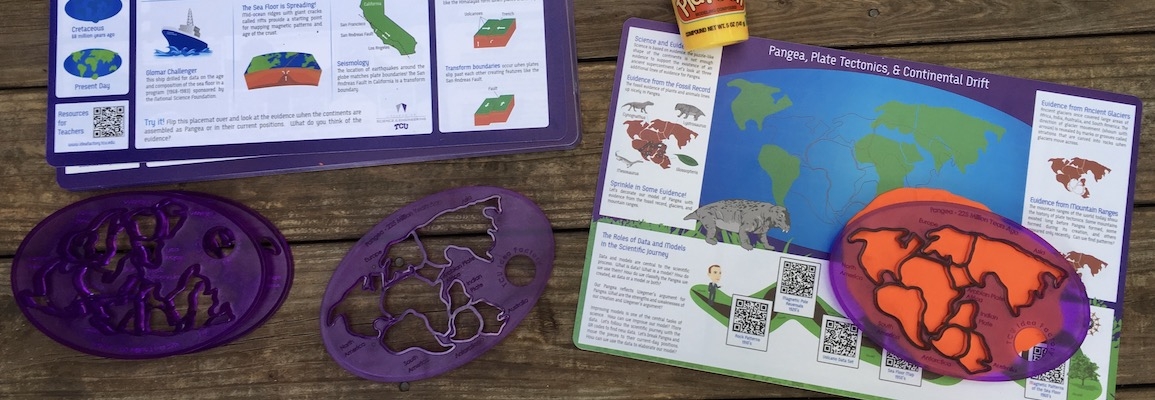In the Clues in Natural Processes module, students learn about how plate tectonics, erosion and other naturally occarring geologic processes shape the Earth and provide clues about its past. Our resources are all free to use thanks to the Department of Geological and Environmental Sciences at Appalachian State University. If you have questions about any of these resources, field trip opportunities or classroom visits please contact our Outreach Coordinator at mckinneymuseum@appstate.edu. If you would like to borrow fossils for your classroom, check out our Loaner Kits.
Resources

Earthquakes in North Carolina
- Earthquakes in North Carolina Student Handout- with questions about East Coast earthquakes and references to the Sparta earthquake of 2020.
- Answer key to the Earthquakes in North Carolina Student Handout.
- More information about earthquakes in North Carolina can be found at our Ask-A-Geologist earthquake page.
Plate Tectonics Pre-Assessment

- Click here for an online version of the pre-assessment (as a Google Form). Please contact Marta Toran at toranml@appstate.edu if your students take the assessment so we can share their answers with you, or simply use our questions in a new Google Form.
- Printer-friendly version of the plate tectonics pre-assessment.
 Plate Boundaries Modeling Activity
Plate Boundaries Modeling Activity
- Teacher instructions
- Student Worksheet and Key
- Earthquakes presentation (created by Crystal Wilson, GES dept faculty)- this is the slideshow we have used as an introduction to the Plate Tectonics Modeling Activity. It includes brainstorming images and questions for before, during and after the activity. Use it as is, or copy it and edit it.
Plate Tectonics Photo Cards "What Happened?"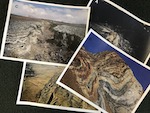
- This is a simple activity that can be used as an Engager to determine prior knowledge. Students are given four photo cards (in printed format or as slides) showing evidence of plate tectonics and asked to write down their explanation of what is happened in each case.Plate Tectonics Photo Cards and Answer Key
Pangea Mats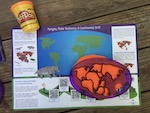
The "Pangea Mat and Cutter" set is produced by the TCU Idea Factory. Students use a cookie cutter to cut the tectonic plates out of Playdoh and they can model Pangea and continental drift. The GES Department at Appalachian State University has 4 "cutters" and 20 mats that can be borrowed by teachers. You must provide your own Playdoh however to ensure that it's soft and enough for your class.
For additional photos of the set, click here.
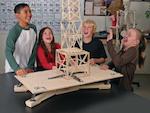 Earthquake Simulation Board
Earthquake Simulation Board
- The "Shake, Rattle and Roll Earthquake Board" by Ward's Science simulates earthquakes of increasing magnitudes. Different types of seismic waves can be created by moving the board in specific ways. The set also comes with two base isolators and an instruction booklet. Students can build structures using toothpicks, spaghetti, marshmallows, popcicle sticks, legos, paper and tape, etc. and then test their earthquake resistance on the simulation board.
- For additional photos and information, go to the Earthquake Board loaner page.
Earthquake Resources Box 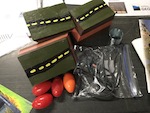
- The Earthquake Resources Box contains materials for demos to show the forces involved in plate tectonics and the mechanics of Earthquakes, as well as ideas for lesson plans, information about how to use the Earthquake Simulation Board and a USB seismometer.
- For more information on the contents of this box including photos, go to the Earthquake Resources box loaner page.
Review Materials, Cheat Sheets, etc
- Plate Tectonic connections to NC Science Standards and NGSS information sheet.
- Student Plate Tectonics Cheat Sheet with vocabulary list, learning objectives and essential questions.
- Types of Plate Boundaries a review chart for students to complete, with answer key for teachers.
Standard Alignment:
- NCSES 6.E.2 Understand the structure of the earth and how interactions of constructive and destructive forces have resulted in changes in the surface of the Earth over time and the effects of the lithosphere on humans.
- 6.E.2.1 Summarize the structure of the earth, including the layers, the mantle and core based on the relative position, composition and density.
- 6.E.2.2 Explain how crustal plates and ocean basins are formed, move and interact using earthquakes, heat flow and volcanoes to reflect forces within the earth.
- 6.E.2.3 Explain how the formation of soil is related to the parent rock type and the environment in which it develops.
- 6.E.2.4 Conclude that the good health of humans requires: monitoring the lithosphere, maintaining soil quality and stewardship.
Other Tips for Teachers:
- Want to borrow some rocks, fossils or an earthquake shaker board? Check out the loaner kits we have available for free.
- If you are intested in visiting our geology facilities or having a guest speaker in your class, please contact us at mckinneymusem@appstate.edu
